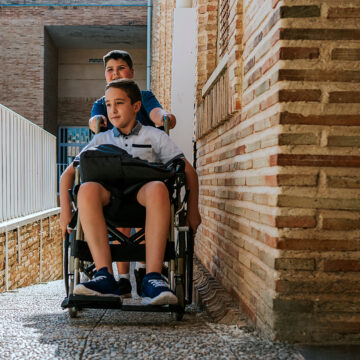Traditionally, estate planning revolves around planning for your spouse, children, and potentially, other family members and friends. But what if you’re on your second or third marriage? Perhaps you have stepchildren, or your children are half-siblings, or maybe you have adopted children as well. Today, many families do not have a traditional makeup, making a traditional approach to estate planning obsolete. It is more important than ever to make sure your wishes are explicitly known to avoid ambiguity and complications later on. Here are some tips to consider when estate planning in a blended family situation.
Estate Administration
If you have children from a prior marriage, you may want to be careful as you craft your estate plan that includes your new spouse. In this situation, the usual route of executing a last will and testament, leaving everything to the new spouse, is very likely to invite conflict among the members of your blended family. Items of personal property that have sentimental value to certain family members can be especially problematic. A better approach is setting up a trust that is structured to cater to both parts of your family, old and new.
Trusts are typically designed to provide for your surviving spouse until their death, and the remainder is distributed to your children. The issue with this arrangement is that it leaves your children waiting on your new spouse to die to receive their inheritance, and it does not ensure that they will receive anything at all. An alternative way to set up the trust is to include provisions that provide distributions to your children outright at your death so that this “waiting period” is eliminated and everyone is accounted for from the outset. When it comes to naming who will inherit items of personal property, be sure to have conversations with family members about what items matter to them to prevent strain later on. You should also document the distribution of your personal property in the trust agreement. Even if your new spouse and your children are close and they get along well, things may change after you pass away, and you should prepare as such. Further, you may also wish to plan for the possibility that your surviving spouse will remarry. To do this, you can have the trust read that the former spouse will no longer receive distributions if they remarry to protect your assets from leaving your family.
Power of Attorney
You may also want to take a close look at your financial and health care powers of attorney and consider whom you have named as your agents in those documents if you cannot make decisions due to incapacity or disability. When you have a blended family, your priorities may be entirely different for your “disability” documents than they are for how your assets will be distributed. Perhaps you trust your children to make health care decisions for you, but your spouse to make financial decisions. It is essential to keep these power of attorney designations in mind when planning with a blended family.
Beneficiary Designation
Another kind of designation to pay attention to is the beneficiary designations on your life insurance, payable-on-death designations on bank accounts, and other similar accounts. For individuals who have remarried, it is a common oversight to forget to update beneficiary designations to remove an ex-spouse and add the new one. Making these changes now will prevent headaches for your family in the future. There are laws in Ohio that automatically “remove” an ex-spouse as a beneficiary on certain assets, however, relying solely on those laws presents a risk that the default laws do not accurately reflect your intent.
What if I do not have an estate plan in place?
If that is the case, then when you pass away, the laws of “intestacy” – meaning you have no last will and testament – come into play. Under these laws, your surviving spouse will receive all of your assets if all of your children are from that spouse. However, if any of your children are not from your surviving spouse, the law dictates exactly how the estate is divided, which may be, and likely will be, contrary to how you would have wanted it to be distributed. Or perhaps your spouse remarries; now that some or all of your assets are your surviving spouse’s assets, they may end up being inherited by people you don’t even know. Other issues can arise if you do not have a surviving spouse, descendants, or living parents. Ohio law treats legally adopted children as your natural children and half-siblings as full siblings for intestacy purposes. Still, you may not want assets to be distributed in this way. Stepchildren you have not legally adopted will be left out altogether under intestate succession, which may also be against your wishes. Intestate succession can be very complicated and contrary to your intent, and because of that, it is best to avoid confusion, especially if you have a blended family.
It is crucial to make sure your intentions are clear in your estate plan. If you or a loved one are ready to safeguard not only your assets but the overall well-being of every person touched by your estate after your passing, give our estate planning attorneys a call. We take pride in guiding our clients through the critical process of protecting their families and their assets.





0 Comments